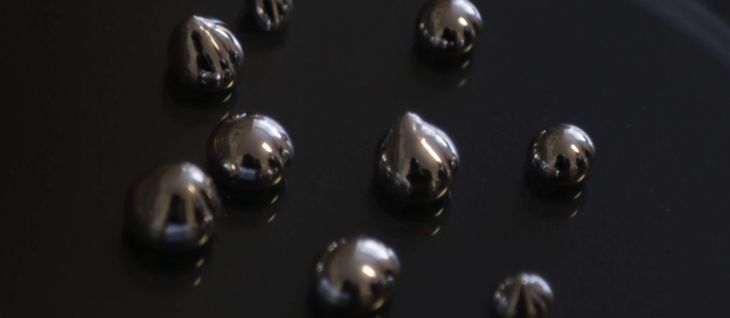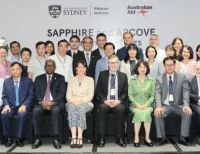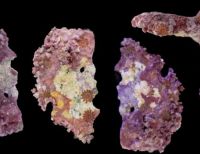Liquid gallium at the School of Chemical and Biomolecular Engineering
 Liquid gallium in a petri dish at the University of Sydney’s School of Chemical and Biomolecular Engineering.
Liquid gallium in a petri dish at the University of Sydney’s School of Chemical and Biomolecular Engineering.
 Liquid gallium in a petri dish at the University of Sydney’s School of Chemical and Biomolecular Engineering.
Liquid gallium in a petri dish at the University of Sydney’s School of Chemical and Biomolecular Engineering.
 Liquid gallium in a petri dish at the University of Sydney’s School of Chemical and Biomolecular Engineering.
Liquid gallium in a petri dish at the University of Sydney’s School of Chemical and Biomolecular Engineering.

click to show image

click to show image

click to show image
In their research, the authors dissolved high melting point nickel and tin in a gallium based liquid metal with a melting point of only 30 degrees centigrade.
“By dissolving nickel in liquid gallium, we gained access to liquid nickel at very low temperatures – acting as a ‘super’ catalyst. In comparison solid nickel’s melting point is 1455 degrees centigrade. The same effect, to a lesser degree, is also experienced for tin metal in liquid gallium,” Dr Tang said.
The metals were dispersed in liquid metal solvents at the atomic level. “So we have access to single atom catalysts. Single atom is the highest surface area accessibility for catalysis which offer a remarkable advantage to the chemical industry,” said Dr Arifur Rahim, senior author and DECRA Fellow at the School of Chemical and Biomolecular Engineering.
The researchers said their formula could also be used for other chemical reactions by mixing metals using the low temperature processes.
“It requires such low temperature to catalyse that we could even theoretically do it in the kitchen with the gas cooktop – but don’t try that at home,” Dr Tang said.
















